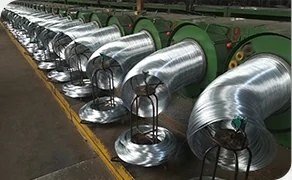 TEL:
+86-13102802206
TEL:
+86-13102802206
 Email:
fencenetting@china.com
Email:
fencenetting@china.com
 Language
Language
 TEL:
+86-13102802206
TEL:
+86-13102802206
 Email:
fencenetting@china.com
Email:
fencenetting@china.com
 Language
Language


The Benefits and Applications of 6% Strand Barbed Wire Fence
When it comes to securing property and managing livestock, fencing plays an essential role. Among the various types of fencing available, barbed wire remains a popular choice due to its effectiveness, durability, and relative affordability. In particular, the 6% strand barbed wire fence has emerged as a leading option for many farmers, ranchers, and property owners. This article delves into the features, benefits, and applications of a 6% strand barbed wire fence.
Understanding 6% Strand Barbed Wire
A typical barbed wire is made up of two twisted wires with barbs placed at intervals along the strands. The 6% strand designation refers to the number of strands used and their overall thickness. A fence with six strands, for example, provides greater strength and deterrent capabilities compared to traditional three-strand wire fences. The barbs, which protrude from the wire, create obstacles that deter animals—both livestock and wildlife—from attempting to cross.
Durability and Longevity
One of the key advantages of 6% strand barbed wire fences is their durability. Made from high-quality galvanized steel, this type of fencing is resistant to rust and corrosion. This is important for long-term maintenance, as it means less frequent repairs or replacements. In agricultural fields or rural properties, where environmental factors can be harsh, the ability of the barbed wire to withstand the elements is paramount.
Enhanced Security
Security is a primary concern for any property owner, and 6% strand barbed wire fences excel in this regard. The multiple strands combined with the sharp barbs create a formidable barrier against intruders. Whether it’s preventing unwanted animals from trespassing or protecting against potential theft, this type of fencing provides peace of mind. Many property owners find that simply installing a barbed wire fence deters would-be intruders due to the fear of injury.
Cost-Effective Solution

Cost is often a significant deciding factor when choosing fencing materials. The initial investment in 6% strand barbed wire is usually lower than that of other fencing options like wood or vinyl. Given the long lifespan of galvanized steel and the minimal maintenance required, the overall cost of ownership is quite favorable. For farmers and ranchers, this makes 6% strand barbed wire fencing an economically sound solution.
Versatile Applications
Beyond security, 6% strand barbed wire fences have multiple applications. They are commonly used in agricultural settings to keep livestock contained while preventing wild animals from entering the area. For example, they are ideal for fencing off cattle, horses, and sheep, as the barbed wires discourage animals from attempting to break through.
Additionally, these fences are frequently employed in industrial sites, perimeters of commercial properties, and even for wildlife management areas. In regions with open pastures, a 6% strand barbed wire fence can effectively mark property lines while controlling grazing patterns.
Installation and Maintenance
Installing a 6% strand barbed wire fence does require proper knowledge and tools to ensure it is done correctly. Posts need to be dug into the ground securely, and the wire must be stretched taut to prevent sagging. Regular maintenance involves checking for loose strands and ensuring that barbed wire remains free from debris.
Conclusion
In summary, a 6% strand barbed wire fence presents an effective, durable, and economical fencing solution for a range of applications. Whether for livestock management, property security, or land demarcation, the advantages of this type of fencing make it a popular choice among landowners. With proper installation and maintenance, a 6% strand barbed wire fence can provide years of reliable service and protection, making it a wise investment for anyone looking to secure their property.